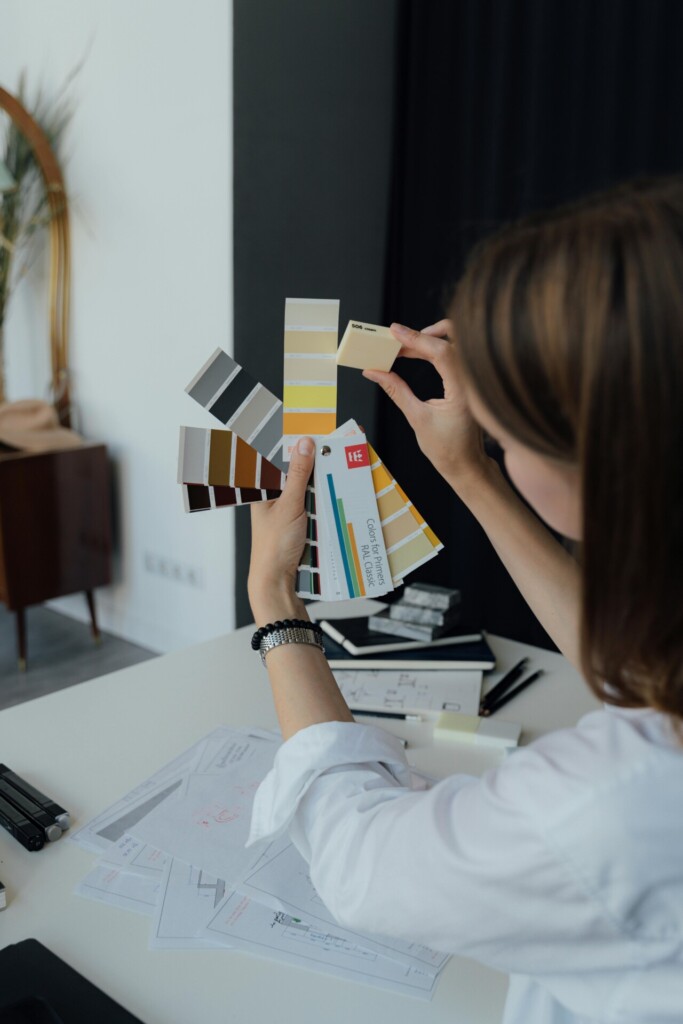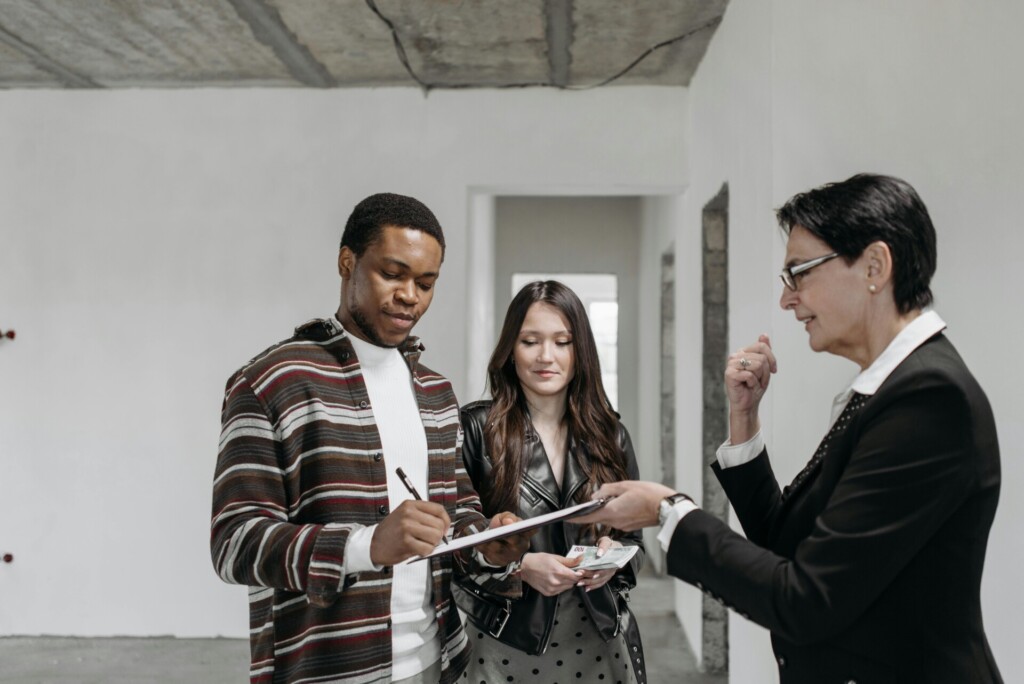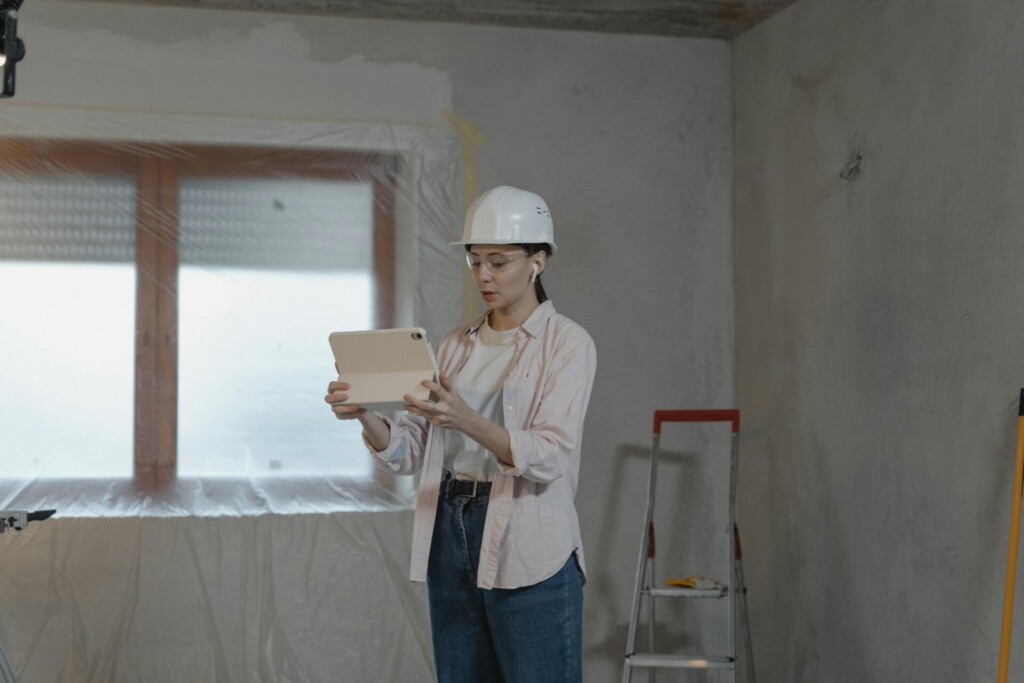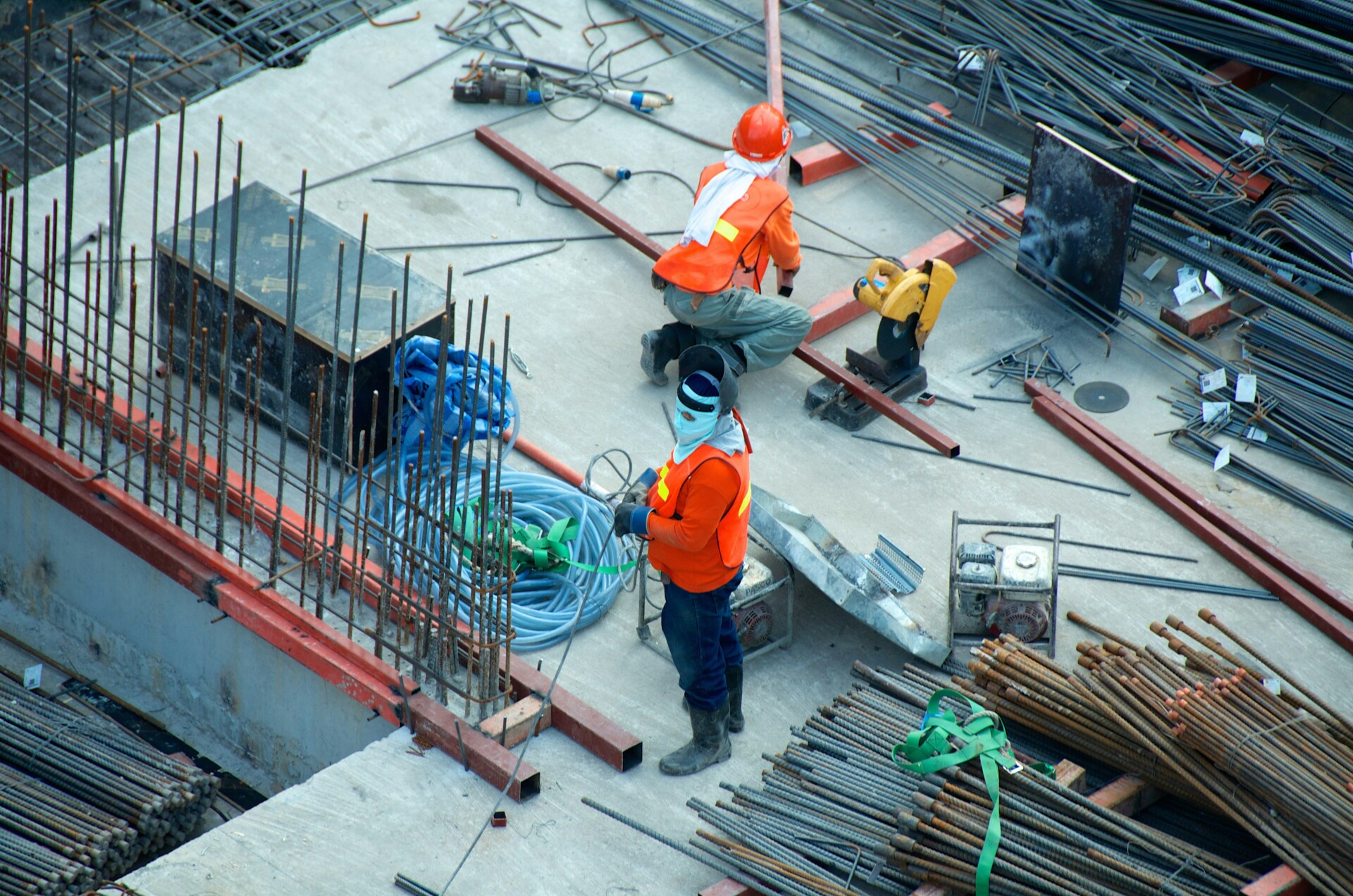Starting a new construction project can feel overwhelming. As general contractors, we often receive questions from clients about when and how to involve an interior designer in the build-out process. Involving a skilled designer from the early stages can significantly enhance the cohesiveness and functionality of spaces to meet the needs of end users.
Interior designers do much more than select furniture and decor. We have found that the most successful projects involve designers early on, preferably at the project’s onset. This allows their unique perspective to influence critical decisions about space planning, materials, finishes, and overall functionality.
By integrating interior design expertise into pre-design conversations, we can engage in more comprehensive discussions about user needs, traffic flow, and conceptual direction. This collaborative approach between contractor and designer ensures that both the structural and aesthetic elements of a space work in harmony from the start.
As we move from schematic design into design development, the interior designer’s role becomes even more hands-on. They work closely with our team to refine layouts, select finishes, and make critical decisions impacting both form and function. This level of coordination allows us to anticipate and address potential issues before construction begins, saving time and reducing costly changes later.
The key is viewing interior designers as valuable partners in the build-out process, not just decoration consultants brought in at the end. Their expertise complements our construction knowledge, resulting in spaces that are not only beautifully designed but also smartly built to stand the test of time.
When Should You Involve an Interior Designer in Your Project?

The best time to involve an interior designer is at the beginning of your project. Although you’ll engage with them most during the Design Development phase, their early input is invaluable. By including a designer early, we ensure that the design vision is cohesive from the start, preventing costly changes later in the process.
Here’s how we typically outline early involvement:
Initial Consultation
In this phase, we meet with you to discuss your goals, budget, and overall vision. We review any inspiration images you’ve gathered and start to develop a high-level concept for the space, aligning on expectations before delving into details.
Schematic Design
Once we have a clear direction, we create initial space plans and mood boards, exploring various layout options and defining the overall aesthetic. This phase often includes:
- Rough sketches and 3D concept renderings
- Preliminary material and color palettes
- Initial furniture selections
Design Development
This is where the bulk of our collaboration happens. During Design Development, we refine all aspects of the design, including:
- Finalizing floor plans and elevations
- Selecting specific materials for flooring, walls, and ceilings
- Choosing furniture, fixtures, and equipment
- Developing custom elements like cabinetry or built-ins
- Creating detailed 3D renderings to visualize the space
By involving us early, you benefit from our expertise in material selection, cost comparisons, and creating a cohesive look throughout the entire project. We coordinate with architects and contractors to ensure the design intent is upheld through every phase of construction.
Remember, good design takes time. Starting the process early allows us to thoroughly research options, source unique materials, and develop thoughtful solutions that truly elevate your space. The end result is a more refined, purposeful design that perfectly aligns with your vision and lifestyle.
What’s the Difference Between Architects and Interior Designers?
The line between architects and interior designers often blurs, causing confusion for clients seeking to build or renovate spaces. While there is some overlap, these professions have distinct focuses and skill sets that complement each other on projects.
Architects typically take a broader view, concentrating on a building’s overall structure, exterior design, and how it fits into its surroundings. They develop the core plans that determine a building’s form, function, and code compliance. Their work encompasses site planning, building envelope design, and ensuring the structure meets all regulatory requirements.
Interior designers, in contrast, focus on interior spaces and how people use them daily. They emphasize layout, material selection, furnishings, and finishes that shape the occupant experience inside a building. Interior designers excel at space planning, FF&E selection, and creating cohesive interior aesthetics.
On most projects, architects and interior designers collaborate closely to create a comprehensive design. Architects may weigh in on material choices or spatial flow, while interior designers often contribute to floor plans and interior elevations. The level of involvement varies, but generally, architects handle the building’s shell and systems, while interior designers plan the interior spaces in detail.
For large commercial or institutional projects, having a blended team where architects and interior designers each leverage their specialized expertise is common. Architects focus on the building’s overall form and function, while interior designers ensure the specifics of how people will interact with and move through the spaces are addressed. This collaboration results in cohesive designs that are both structurally sound and aesthetically pleasing.
Ultimately, while architects and interior designers have distinct roles, their relationship is not always clearly defined. The best projects arise from close partnerships where both professions contribute their unique perspectives to create exceptional built environments.
| Aspect | Architects | Interior Designers |
|---|---|---|
| Focus | Overall design and structure of buildings, including spatial organization and structural integrity. | Designing interior spaces, focusing on aesthetics and functionality through furniture, color schemes, and finishes. |
| Scope | Designing and planning both exterior and interior spaces for structural and aesthetic coherence. | Enhancing the interior aesthetics, user experience, and functionality of existing spaces. |
| Structural Considerations | Deep understanding of building systems, codes, and regulations for safe construction. | Less focus on structural aspects, more on interior aesthetics. |
| Collaboration | Works with engineers, contractors, and other professionals for successful project implementation. | Works alongside architects to align interior design with the architectural vision. |
| Licensing | Requires a professional license, extensive education, practical experience, and passing of licensing exams. | Licensing varies; in some areas, certification is optional but beneficial for career advancement. |
| Design Concept Contribution | Responsible for the overarching design concept of buildings. | Ensures interior spaces align with the architectural vision, crafting unique and functional environments. |
How Can You Effectively Communicate with Your Interior Designer?

Clear communication and setting expectations early are essential for successful collaboration with an interior designer. We establish trust by being transparent about costs and educating clients on realistic budgets for their project goals. During meetings, we strive to create a focused environment free from distractions to have productive discussions.
To keep projects on track, we encourage clients to respond promptly to emails, calls, and design decisions. This helps us provide accurate pricing and maintain a seamless workflow. For sharing design preferences, visual references prove far more effective than verbal descriptions. Terms like ‘modern’ or ‘traditional’ can vary in interpretation, so tools like Pinterest boards or magazine clippings help us better understand a client’s vision.
Here are some practical tips for communicating effectively with your interior designer:
- Be upfront about your budget from the start
- Provide visual inspiration alongside verbal descriptions
- Respond promptly to keep the project moving forward
- Ask questions if anything is unclear
- Be open to professional suggestions and guidance
We also use style questionnaires to gain deeper insights into our clients’ preferences. These help us pinpoint specific elements they are drawn to and create a cohesive design plan. Throughout the process, we maintain open communication and welcome feedback to ensure the final result aligns with our clients’ vision.
How Does an Interior Designer Coordinate with Other Construction Professionals?
Interior designers serve as vital intermediaries between clients and construction teams. Their comprehensive understanding of the building process enables them to communicate effectively with contractors and tradespeople, bridging the gap between design vision and practical execution.
When brought onto a project, interior designers collaborate closely with architects, builders, and various construction professionals. Together, they develop design plans that are both aesthetically pleasing and technically feasible. This collaborative approach helps prevent costly mistakes and ensures smooth project progression.
Some key areas where interior designers coordinate with construction teams include:
Electrical and Lighting Planning
Interior designers work with electricians to determine optimal placements for outlets, switches, and lighting fixtures. They consider functionality and aesthetics, ensuring sufficient power sources for all planned furnishings and equipment while maintaining a cohesive design. For example, a designer might advocate for additional floor outlets in a large living room to accommodate flexible furniture arrangements without unsightly cords.
Plumbing Fixture Locations
Collaborating with plumbers, interior designers help determine ideal locations for sinks, toilets, showers, and other plumbing fixtures. They balance code requirements with spatial flow and user comfort. A designer might suggest relocating a vanity to create a more spacious bathroom layout or recommend a specific shower system that complements the overall design aesthetic.
Space Planning and Furnishings
Interior designers assess whether planned spaces will accommodate intended furnishings and traffic flow. They may recommend structural adjustments to the architect or builder if needed. For instance, a designer might identify that a proposed kitchen island is too large for comfortable movement and suggest resizing it to improve functionality.
Material Selection and Coordination
Designers choose materials for flooring, countertops, cabinetry, and other finishes, ensuring they meet both design goals and practical requirements. They coordinate with suppliers and installers to verify availability, lead times, and proper installation methods. A designer might work closely with a tile contractor to create a custom mosaic backsplash that perfectly complements the kitchen’s color scheme.
By facilitating clear communication between all parties involved, interior designers help streamline the decision-making process and ensure that your design vision is accurately translated into reality. Their coordination efforts minimize errors, reduce delays, and ultimately contribute to a more efficient and successful construction project.
The seamless integration of design elements with construction realities is a hallmark of successful interior design projects. As construction progresses, designers continue to liaise between clients and contractors, addressing any unforeseen challenges and making necessary adjustments to maintain the integrity of the design concept while adhering to budgetary and timeline constraints.
Conclusion: Maximizing Your Interior Design Partnership

Effective coordination and communication are crucial for maximizing success with interior design partnerships. As general contractors, we understand the value that skilled designers contribute beyond mere aesthetics. Their expertise in functionality, budget management, and code compliance helps create spaces that truly meet clients’ needs.
By involving designers early, establishing clear lines of communication, and fostering mutual respect, we facilitate a seamless process that leads to better outcomes. Our experience has shown that investing time upfront to align on goals, timelines, and responsibilities pays dividends throughout the project. We strive to be transparent about challenges, collaborate on creative solutions, and leverage each team member’s strengths.
A strong partnership between contractor and designer ultimately elevates the entire project. It enables us to deliver spaces that not only look stunning but also function flawlessly for our clients. The investment in proper coordination results in smoother execution, fewer costly changes, and—most importantly—delighted clients who can fully enjoy their newly designed spaces.
At EB3 Construction, we’re committed to fostering these collaborative relationships that lead to exceptional results. We invite you to contact us to discuss how our coordinated approach can bring your next design vision to life.




